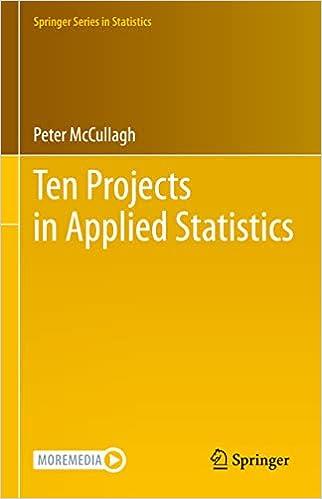In the simple linear model setting, the (F)-ratio for testing the hypothesis (mu in mathcal{X}_{0}) versus (mu
Question:
In the simple linear model setting, the \(F\)-ratio for testing the hypothesis \(\mu \in \mathcal{X}_{0}\) versus \(\mu \in \mathcal{X}_{1}\) is the ratio of mean squares
\[
F=\frac{\left\|Q_{0} Yight\|^{2}-\left\|Q_{1} Yight\|^{2}}{\left\|Q_{1} Yight\|^{2}} \frac{n-p_{1}}{p_{1}-p_{0}}
\]
where \(\mathcal{X}_{0} \subset \mathcal{X}_{1}\), and \(p_{r}=\operatorname{dim}\left(\mathcal{X}_{r}ight)\). Using the expression in the preceding exercise, show that the log likelihood ratio statistic is a monotone increasing function of \(F\) :
\[
2 \Lambda=m \log \left(1+\frac{\left(p_{1}-p_{0}ight) F}{n-p_{1}}ight)
\]
where \(m=\operatorname{dim}\left(\mathbb{R}^{n} / \mathcal{X}_{0}ight)=n-p_{0}\) for the Welham-Thompson statistic, and \(m=n\) for the ordinary likelihood-ratio statistic.
Step by Step Answer:






